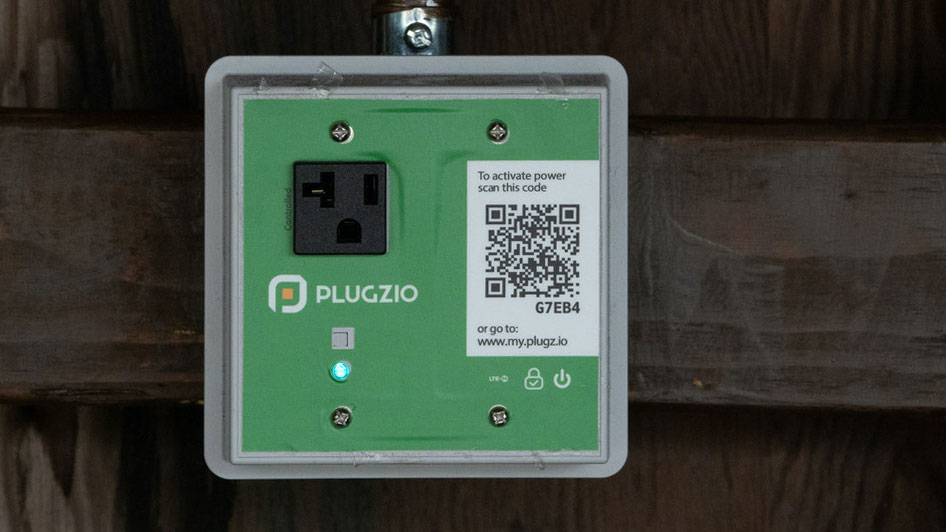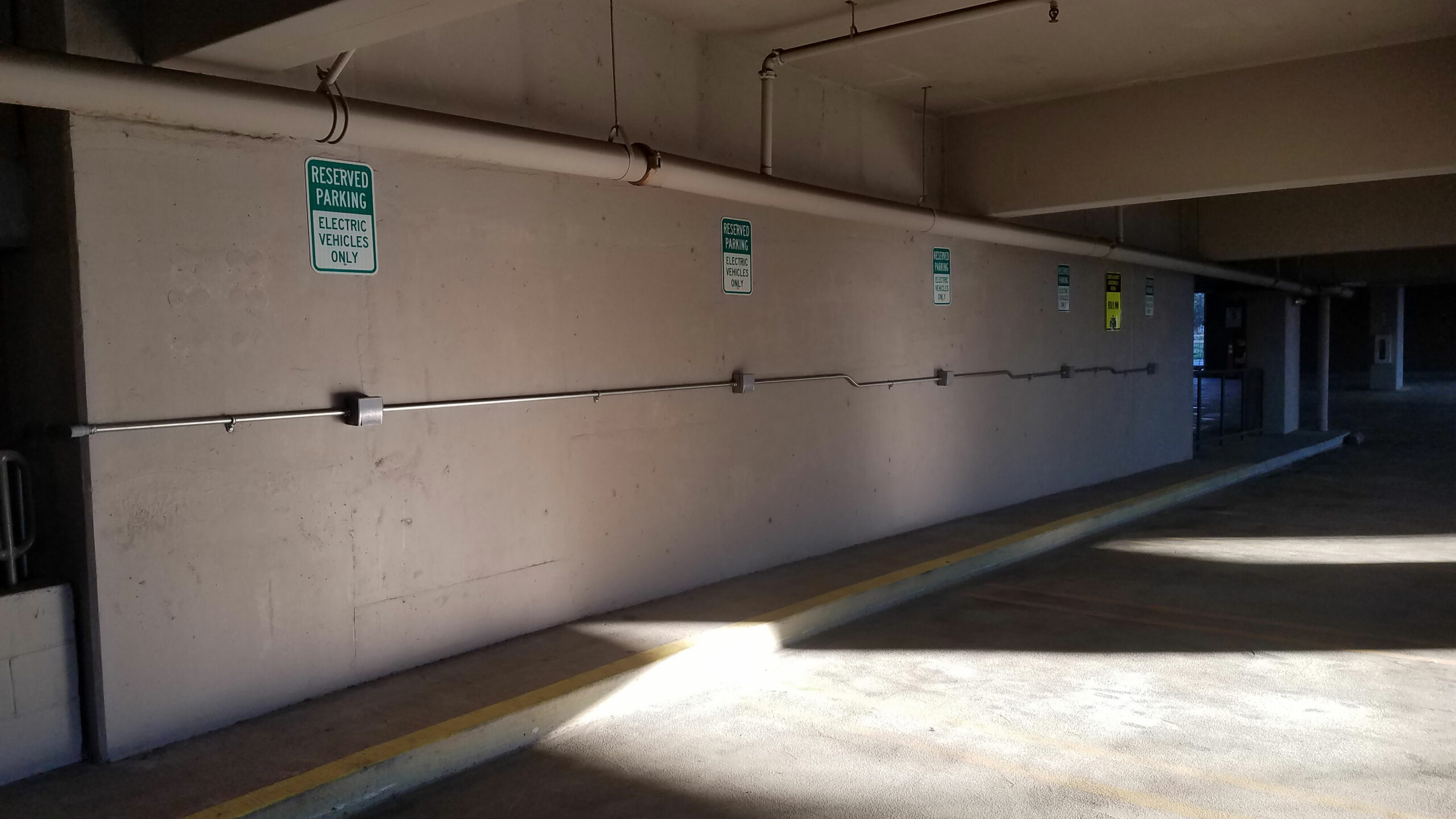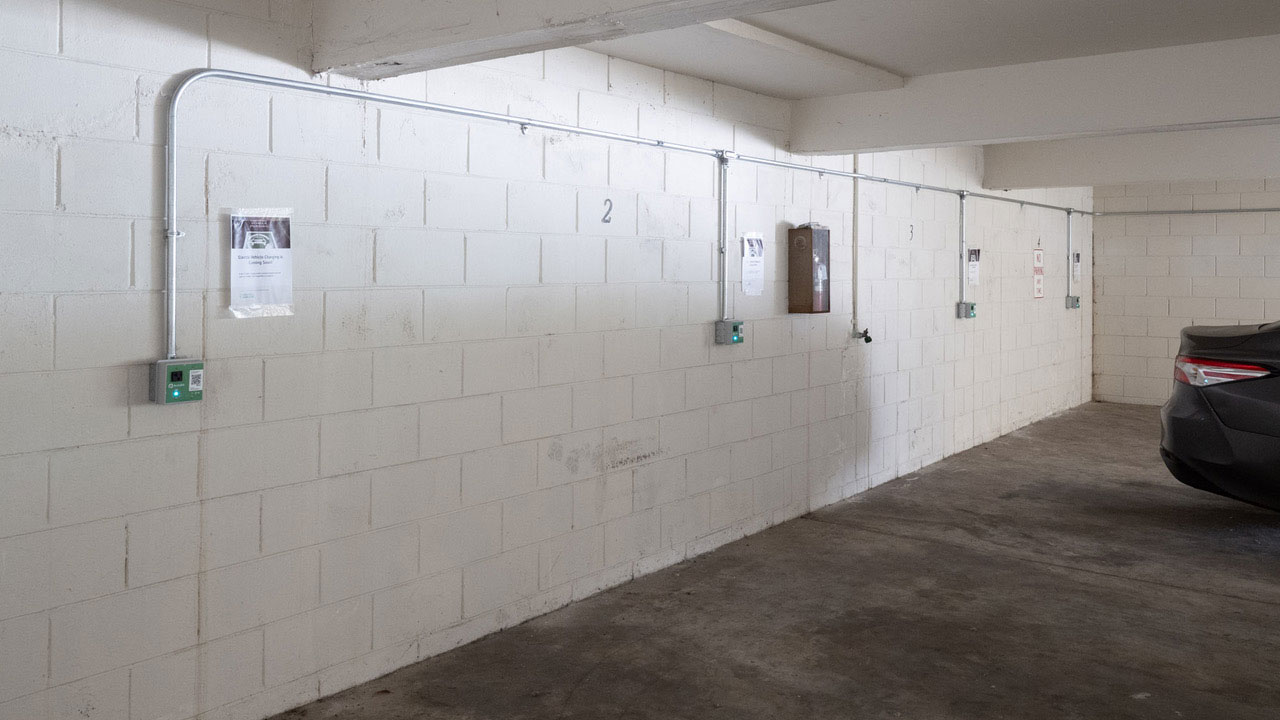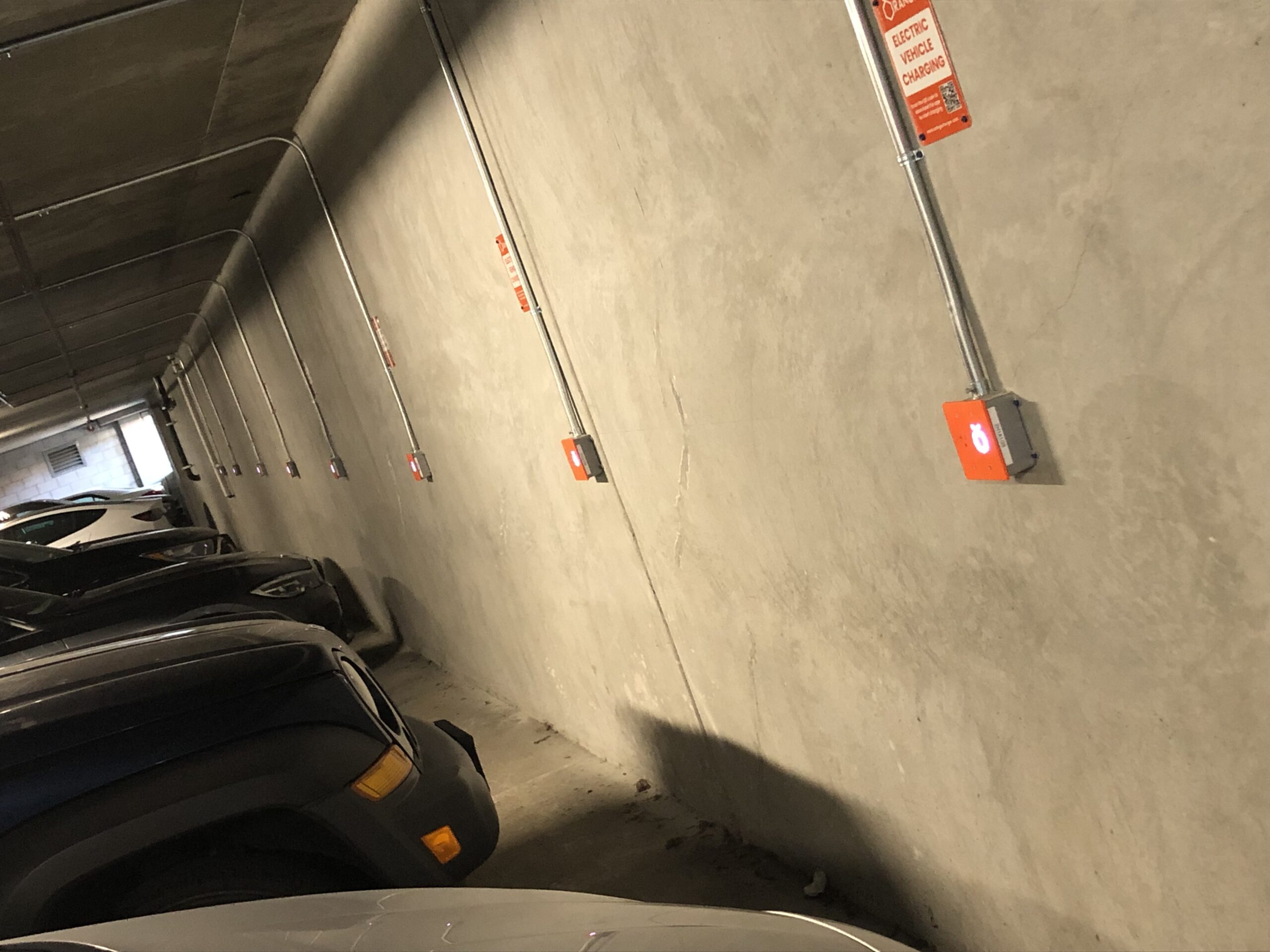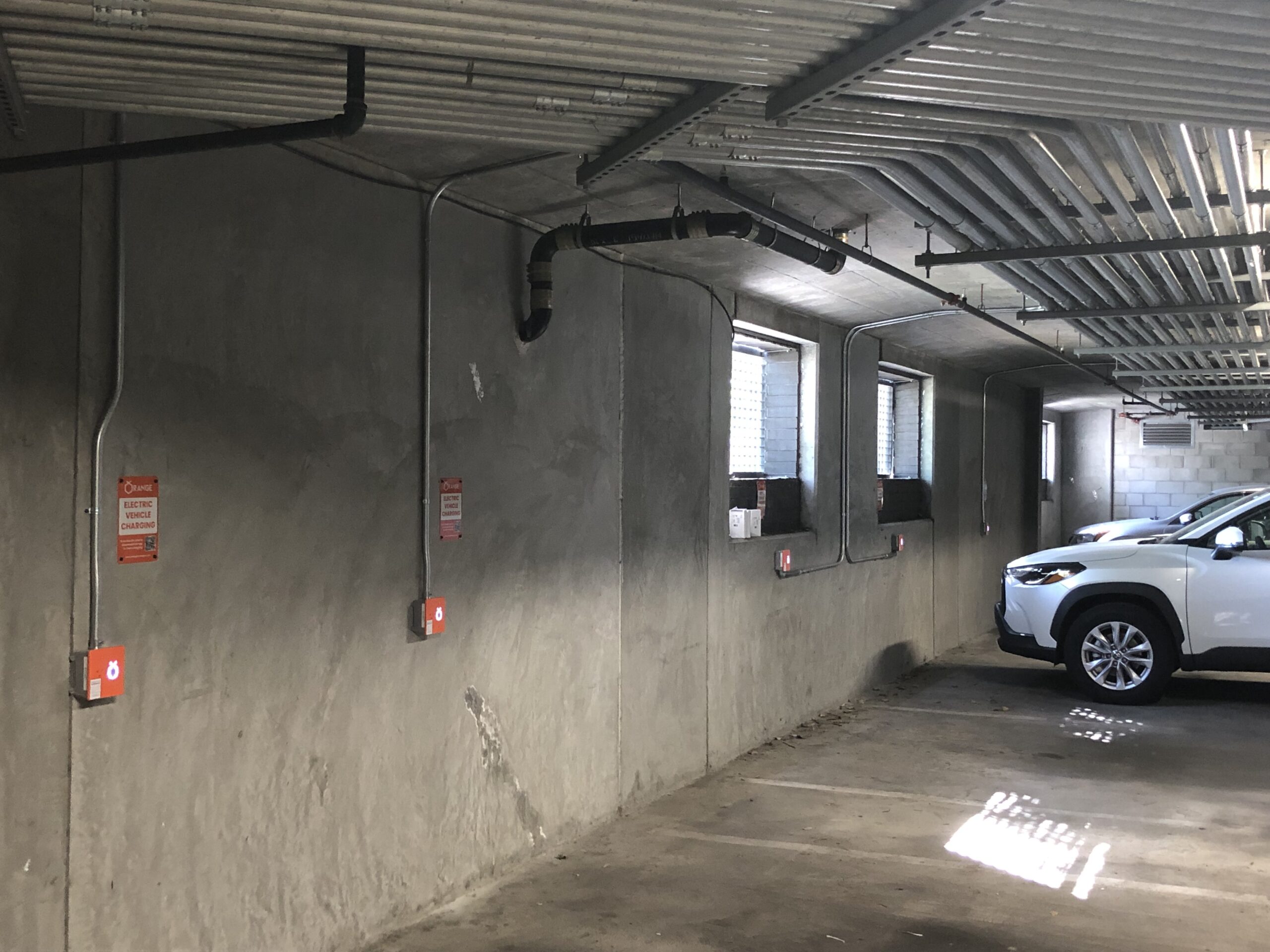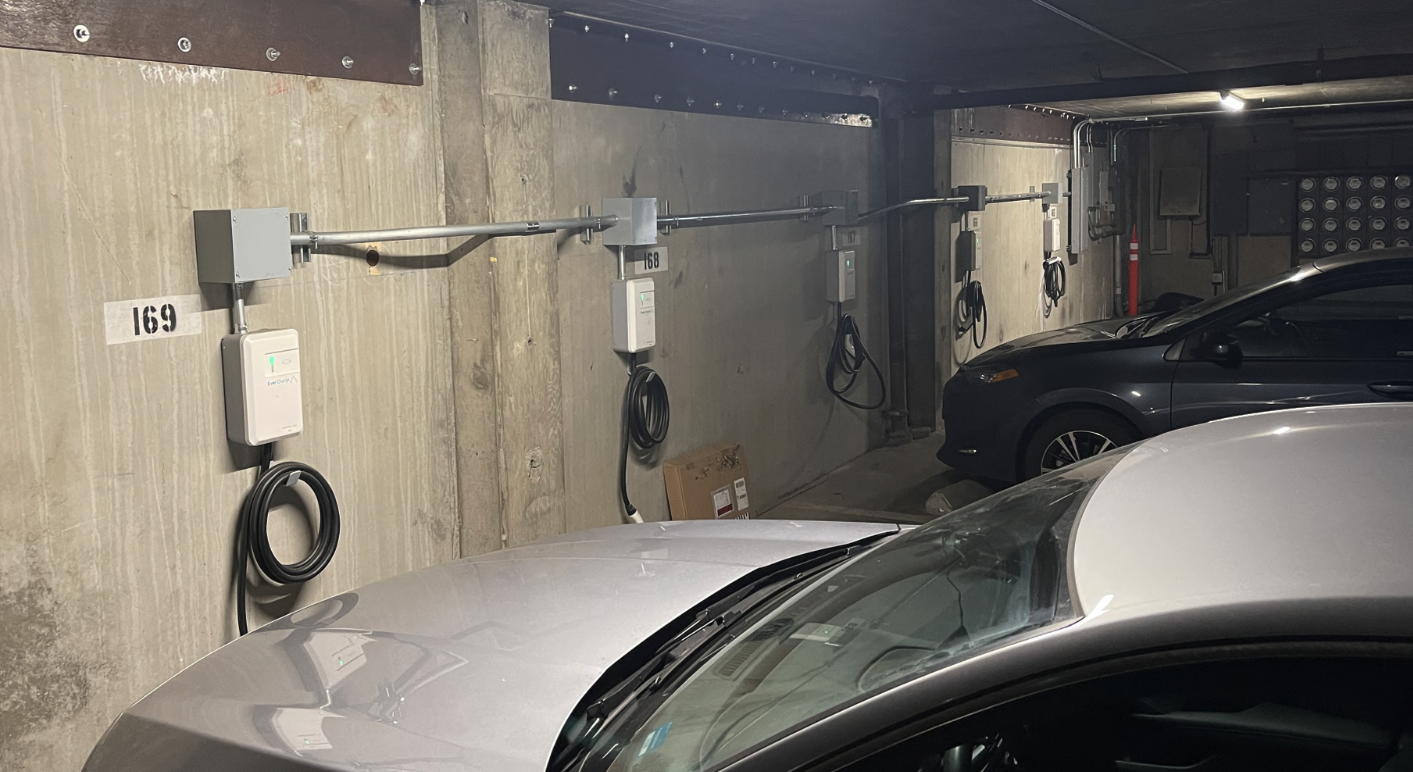EV charging
Technical methods, case studies and policies
These technical resources and case studies outline Peninsula Clean Energy’s strategy to enable universal access to EV charging and is intended for transportation electrification program designers, regulators, and other public agency programs. The approach aligns infrastructure installed to drivers’ actual needs. This substantially reduces the high costs of EV charging projects, sometimes by an order of magnitude, enabling many more ports to be installed than with conventional strategies.
Matching charging capacity to everyday driver needs
All levels of charging have an important role to play. For long-dwell locations, the approach is to right-size charging levels based on average driving need.
Specifically, the average need is 25 – 35 miles per day for a typical urban and suburban resident.
For residential settings, cars are parked an average of over 12 hours. Charging needs can be satisfied with Level 1 (dedicated 120V 20-amp circuit, delivery up to 16 amps and 1.9 kW to the vehicle) or power-managed Level 2 (1.9+ kW) which provide 40 – 70+ miles of charge overnight, avoiding more expensive electrical capacity upgrades. Power-managed Level 2 systems can provide higher average charging but Level 1 provides lower cost. Research on charging needs based on actual commute patterns indicates that 94%+ of driver's actual driving needs are satisfied with 1.65 kWh charging level.
Workplaces have somewhat shorter dwell times and managing charging at higher power levels may be appropriate.
Finally, fast charging (Level 3) provides essential support for long-distance trips, high utilization services such as ride-hailing, and some gap-filling support for those with no access to charging or whose periodic needs exceed their day-to-day charging option.
Principles
For residential, workplace, and long-dwell destination charging, the Peninsula Clean Energy program operates on the following principles:- Provide charging capacity to meet typical users’ daily needs within expected vehicle dwell times (minimum 1.9 kW for overnight charging)
- Future-proof sites including:
- Multifamily new construction: All residential units have electrified space
- Existing construction: Maximize port count within available transformer capacity to avoid expensive distribution grid upgrades
- Support Level 1 and load management 2.
Case Studies
Peninsula Clean Energy case studies
- Technical Assistance Case Study: How our free technical assistance enables properties to install more charging than first requested.
- Low Power EV Charging Pilot: Reducing costs through smart outlets at multi-family housing.
- MUD Technical Assistance Case Study: Power management and Level 1 strategies provide EV charging to all residents at multi-family property.
- AES Report: ALM and 100% Access to Charging for New Buildings in British Columbia
- EV Ready success story: Tyrone Properties adds EV charging at low to no cost
Other case studies
- PowerFlex/23 and Me: ALMS workplace charging case study demonstrating a main panel oversubscription by over 6X.
- NREL/PowerFlex Pilot: Demonstrating an electrical infrastructure cost avoidance of 50%.
Cost analysis
- Comparison of EVSE Installation Program Costs
- Minimum Cost Analysis of Level 1, Power-Managed Level 2, and Traditional Level 2 (dedicated 40A circuit)
- Cost Analysis of EVSE Installation during New Construction vs Retrofit
- Level 2 Power Management Overview
- Level 1 Plugzio smart outlet
- Smart panels
Local and state policy
- “Update Green Building Codes to Make EV Charging Available for Everyone” – Cal Matters OpEd
- Permitting Guidance for Automated Load Management Systems
- Local building codes
Reports
- Level 1 EV Charging at the Workplace. Department of Energy. July 2016.
- Consumer Acceptance of Zero Emission Vehicles and Plug-in Hybrid Electric Vehicles. California Air Resources Board. January 2017. Note 50+% of all EV drivers claim to use Level 1 as their type of home charging, page B-61.
- Innovation for EV Charging for Multi-Unit Dwellings. Ecology Action. November 2020.
- Multi-Unit Dwelling Plug-in Electric Vehicle Charging Innovation Pilots in U.S. Metropolitan Areas. CSE/Forth Mobility. June 2020. Analysis of charging stations at thousands of MUDs across the country, demonstrating average plug times (12+ hours per night) and other key metrics to inform charge management potential.
